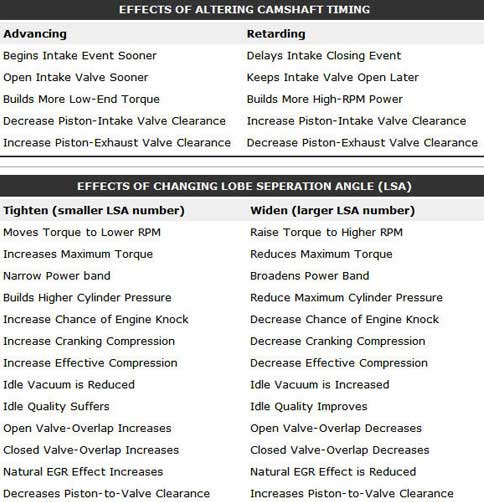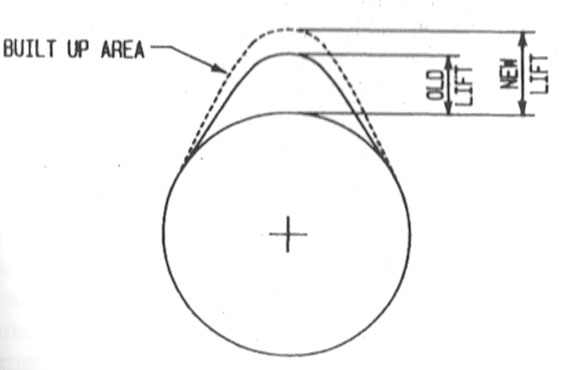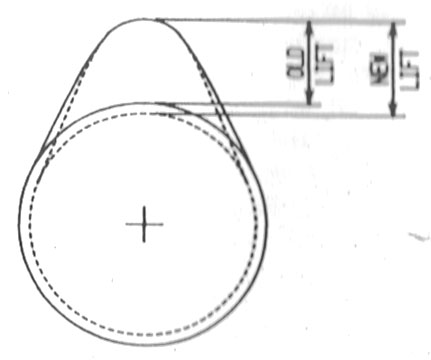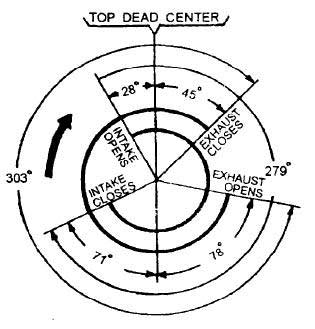If you want real horsepower and or better fuel economy then changing the camshaft is one of many options open to you. Generally because of the costs involved in fitting a cam, some car owners opt for cheaper add on goodies to either gain horsepower or get better fuel economy. The selection process of choosing a cam can be daunting and is best left to the experts to help you choose. Well it is if you own a Ford, Chev or Holden V8. The choices are many but for other engines the choices are limited and very simple to choose which cam you would like. The manufacturers will supply all the information you need to make the correct choice of cam to suit what you want to accomplish. However if you want a cam that produces 50% more horsepower but still want the economy, then that is not possible. Big cam profiles and fuel economy just aren't used in the same sentence. However there are options for gaining a little more power and still retaining your stock cam economy. You may like to consider fitting a special set of hydraulic lifters to the cam that will give you the best of both worlds, the power increase the cam provides and still retain good economy if you drive it steady. See my article in Product Reviews on Rhoads Lifters.
Many factors are taken into account when choosing the correct cam for the job. Obviously make of vehicle, model and engine size are the first factors to choosing the correct cam to fit your engine. What max RPM do you expect to rev the engine to, be realistic here, if you don't intend to do any further mods to support the cam then asking for a high rev cam without adding bigger carburation, intake manifold or a decent exhaust to support the cam will lead to disappointment, not to mention that the bottom end might not take to kindly to high revs without being beefed up somewhat. The current diff ratio, manual or auto transmission will also dictate what cam choices you have unless you modify the stall of the converter in an automatic.
Cam Data in brief may be now appropriate to discuss. 16-56, 20-60, 25-65, 30-70 are common cam specs in reference to duration. In these cases the inlet and exhaust cam profiles could be identical and mirror images of each other when split down the TDC line depending on the ICL & LSA angles. These are also known as single pattern cams. Some can be symmetrical, meaning when the opening & closing points of the lobe are the same angle either side of the lobe centreline then this is symmetrical. I will use the 20-60 profile to explain what the numbers mean. The first number is when the inlet valve will open BTDC, (20 deg) and the second number represents when the valve will close ABDC (60 deg). The exhaust will open 60 deg BBDC and close 20 deg ATDC. The valve overlap at TDC will equal 40 deg and the duration of the cam is 260 degrees. The lift at the valve after calculating rocker arm ratios would be about .440", however this is not shown in this drawing, I am only taking an educated guess from my experience with a cam of this size. In a 6 cyl or V8 this is considered a very mild cam and will idle just slightly rougher than a stock cam. This cam will produce a nice gain in low down torque and power with little to no loss of economy. The more valve overlap and cam duration you have as in the 30-70 cam, the more the horsepower improves and the more fuel you will consume, especially if you use the available horsepower. Also the quality of engine idle deteriorates with larger overlap angles as well as high lift rates and requires the idle speed to be raised. Typically an early model stock V8 will idle at 650 RPM, but fit a 30-70 cam and the idle will be around 800 RPM and a little rough. You can't mistake the sweet sound a wild cam makes when it is timed and tuned correctly.
|
In the old days a card would be included with the cam showing a diagram similar to the ones to the right with all the cam specs needed to time it correctly. The top cam is a duel pattern and the bottom one is a single pattern. To interpret it if you are having trouble - the inlet opens 28deg BTDC & closes 71deg ABDC. The exhaust opens 78deg BBDC & closes 45deg ATDC. Inlet duration is 279deg & ex is 303deg. Valve overlap is 63deg. ICL, LSA and valve lift will be written elsewhere on the cam card. The specs for this cam would be written as 28-71 78-45. Two sets of numbers are required to show that the inlet is different to the exhaust.
The bottom one has no specs but it can be seen that the intake opening point is equal to the exhaust closing point in angular position before and after TDC. The same with the other two points at BDC. The specs for this cam would be shown as 25-65, 30-70 etc |
|
The table below shows the effect of advancing and retarding the camshaft. This may be necessary if you just can't find the right cam for your purposes. The cam is generally retarded or advanced by about 4deg. This will shift the cams advertised power and torque settings by approx 500RPM. LSA is not adjustable and is set by the cam grinder. Below you can see what effect this has on cam performance. This table is in reference to a single cam not a DOHC. There are thousands of
combinations of cams out there to choose from, that's why I say you need to trust the salesman to make the right choice. 
I have not yet mentioned a spec that is used or was used in the old days and that was a degree duration @ .050". This spec was quite important as it was a measure of the rate of lift of the cam. In other words, how quick the valve was opened. you would have the cam duration and say it was 260deg and was a 20/60 grind. These spec without the duration @ .050" spec was not telling you much about the cam. This is because without knowing the rate of lift it would be difficult to determine how this cam would perform. I mentioned earlier that a 260deg cam would idle nicely and that is sort of true but can change depending on the LSA angle and the rate of lift. Let's drop the LSA out of the equation, you can look at the chart above to see how LSA affects performance. Let's look at rate of lift only. If the valve opens slowly and has a steady rate of lift till it reaches max lift at the centreline then the engine will indeed have a good idle but what if the valve opens quickly and reaches max lift well before the lobe centre line, it then holds the valve at full lift for a while and then slams shut quickly. This cam would have a rough idle and again this would depend on the LSA angle in combination. Now a cam like this is very likely to be a special grind and possibly reserved for high performance work. A good example would be a drag roller cam and I say roller because this is the type of lifter that would be required to be able to follow such a high rate of lift camshaft. A normal lifter would not clear the leading edge from jamming into the camshaft. So now I am faced with the modern technical version of camshaft specs. This is now a phase 1, phase 2 etc. How the hell are you to know what the cam actually is without knowing the basic specs. By basic I mean the opening & closing points of the valves which then gives you the overlap and total duration with a bit of simple maths if this is not written on the spec card and then the last spec of degrees duration @ .050". All you have to go by now is the product description and what the manufacturer tells you about the camshafts performance. Is this a good thing to have the camshaft simplified like this? I think probably for the lay person a simplified explanation of a camshafts performance would be better. Modern grinds are a fair bit different now to the old days. Big money has been poured into R&D to develop new grinds that will satisfy almost all rev heads.Enough on this, lets move onto cam re-grinds. Below are two examples on how a regrind on an old cam is done. The pictorial on the left shows that the cam is built up by welding material between the opening and closing points and then grinding it to shape leaving the base circle at almost its original diameter. The next method is more common as long as the worn shaft still had a good nose. It was very easy to just grind the shaft down. Sometimes a combination of repair could be done. Which ever method was used in the camshaft reclaiming, there is one certainty in the final product adjustment. The geometry of the rocker will be comprimised and will require geometry adjustments to be made to maintain correct geometry of the rocker arm from its closed to full open and closed again positions. Now that is another very indepth discussion.


The following video shows a camshaft in the making on a whiteboard and explains the parts & how it works.


